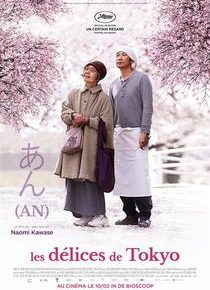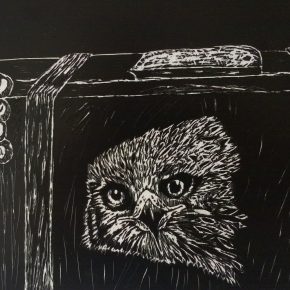Category Archives: CARVALHO
Annual Nature Writing Contest sponsored by author Rui Carvalho
We are very happy to announce that the literary contest ‘Nature’ is about to start. This year’s theme is “The Nature of the Universe”,
with Earth’s terrestrial nature remaining central to the theme.
All are welcome to enter by submitting a piece of writing on the theme of nature and the natural world. This can be a poem, a short essay, or a short story. American author Janine Canan, who has a long and established reputation writing on these themes, will serve as judge, and Portuguese author Rui Carvalho sponsors the contest and prizes.
Further details and deadlines can be found at: https://talesforlove.blogs.sap
Rui Carvalho’s Tales for Love and Synchronized Chaos Magazine’s Nature Writing Contest 2018
The Literary Contest For Nature 2017-2018 is back. It continues to
encourage writers from around the world to create poetry and short
stories to recall the importance of supporting nature as our mother
and cradle of humanity. It is a creative process that seeks to
stimulate new writers, creating a valid opportunity that can create
bridges for their future. This year also offers a small monetary prize
to support the purchase of writing materials.
Do not forget to participate, for more information see:
http://talesforlove.blogs.
Poem from Rui Carvalho
Flower Reborn (In Pedrógão)
Stubborn; As only a woman knows how to be.
Knowledgeable; As only a Goddess knows how to be.
Feminine and beautiful among the black of death,
reborn, alive, dependent on strength and not on luck.
Beautiful is your strength that gives color to the Morning.
Sunrise agape renewing Hope.
And the wind packs it, shrouded in gray dust,
that everything around him contemplates her Dance.
It is she, the Flower, who rises on the mountain,
Again, to prove that, who sowed her, was right …
To prove that a Goddess looks at us from the front:
without fear, despite the lives the wind took.
Slowly the human work is reborn in its surroundings,
but agile to the rhythm of green Grace,
it rises faster than all,
and sharp fits the future: Dull paint.
Goddess of the Morning, clothed with Hope,
dance in Grace; It balances in the air its Braid.
by Rui M.
This poem is spiritual and feminist to honor Janine Canan, a feminist writer from California.
Pedrógão is a locality in Portugal where 64 people died this June
during a wild fire.
This and other poems will be in a new book, Pieces of Hope (in English,
Portuguese and Spanish).
For more info about the book contact synchchaos@gmail.com
Film review from Rui Carvalho
Cinema Critique: Les Délices de Tokyo by Rui M. Carvalho (30 May 2017)
Full of poetry, Les Délices de Tokyo, a movie directed by NAOMI KAWASE, is a film that imprisons us inside the screen. Gradually we forget everything around us, until we almost refuse to be confronted with the end of this wonderful piece of art.
At first glance the story seems trivial: one Spring’s day, Tokue, a 76-year-old woman approaches Sentaro, the chef of a small restaurant. Sentaro mainly sells dorayaki, a small cake filled with red-bean (azuki) jam and Tokue explains him that she always wanted to make them, she implores him to let her have that life opportunity. He tells her “no” but she leaves a small sample… and he finally accepts.
Aditionally, there’s a teen named Wakana, a very perceptive person, a regular customer, who ultimately also applies to work at the shop. Together they are a family, Tokue, as the mother of Sentaro and Wakana, and a “mystic” member who seems to glue together all the feelings of these characters.
We can’t imagine a possible end to this story, but Tokue gives us very subtle clues, for example, when she speaks of the natural world in a way that might seem strange to us because she’s much more aware of nature than most folks inside a city… There’s a sense of being different, being isolated inside the grey walls of buildings in open air. Tokue’s eyes emanate compassion in a mysterious way.
We are only able to understand them when the owner of the restaurant learns that Tokue is a patient who lives in a leprosarium… and demands Sentaro fire her, something he refuses but must accept at the end.
When Sentaro and Wakana visit Tokue, for the first time, at her home, the leprosarium, the vivid Wakana alerts him that he will be seeing people with deformed faces. When they meet the patients, the lepers are talking together, smilling, happy despite their reality: they are also a family. That’s the power of being accepted as we are… despite our differences, our different ways to see the universe and the different ways others see us.
Also, there’s no victory against nature here ; the nature of disease. On the contrary, Tokue determinedly accepts everything… especially without words, simply with the way she looks to cherry blossoms. She sees herself as a piece of the natural world, destined to live and to die. Maybe the fact that the actress deals with cancer in real life helps her with this role.
At the end, we remember the moment when she explains she had to release the canary Wakana gave her… he asked her to do so… and this, combined with the fact that she confesses that after her death, through a cassette recording, leaves us a final thought: a timeless reminder that our mind wants to forget that we are sick for awhile so that we can be happy during all moments of life. That’s certainly the secret of her azuki jam.
This movie explains the human condition in depth: the capacity of small things to change our lives; the importance of simple ordinary people; the power of chance that can transform small moments into important parts of history. The photographic look of the film’s scenes additionally help the director with this therapeutic message. The random bubbles of the boiling beans and Tokue’s coat, with colors resembling cherry blossoms, look like living creatures. Visually, even minor background objects come to life.
This is a movie about the most important people: the simple people.
Rui Carvalho reviews Living Will, book collection by Andre Oliveira and Joana Afonso
The comics “Living Will” is an original idea by André Oliveira (writer) and Joana Afonso (graphic designer). I strongly recommend you to try this collection of seven small books because, I believe, their content is truly unique and, most of all, it is “an arrow to our hearts,” capturing our attention.
The very first sentences are revealing: “My pops used to say life’s just like a pint of beer. It begins as a sparkly refreshing nectar, bringing some kind of golden and sacred joy, and it ends with bitter taste.” There’s a depth of feeling or an unusual sacred revelation (or not) in these words that takes the piece to another level of meaning where time really matters. Especially if we take into account that old Will’s life as he understands it has “reached sort of a dead end, so it seems.” He is the main character, the hero of this adventure and all he feels is that something has happened that he should take into account. He misses Judith, his dead spouse, but, on the other hand he has a bag full of pieces of memories encrypted in small white papers…
Rui Carvalho, Portuguese artist and software developer, reviews Beatrice Tillier and Tehy’s comic book Fees et Tendres Automates
A Journey to “Fees et tendres automates”
Comics, or graphic novels, are considered the ninth out of the traditional, basic forms of art. In fact, comics can be seen as a result of the joint forces of several of the basic forms of art, for example, literature, drawing and architecture.
And, comics are certainly influenced by the world that surrounds the artist: the creator of the small world existing inside the book.
The book “Fees et tendres automates”, original title, in French, or “Fairies and Tender Automatons”, in English, by Béatrice Tillier and Téhy, is a portrait of a world dying due to a war provoked by man but, at the same time, it is a fairy tale, a platonic and electronic love story, between two robots: a tender automata boy and an ethereal robotic fairy. Both of them are a subtle sign of hope for that world. Interesting, is to notice that those two beings are the creation of a man, a scientist, and clearly behave more intelligently than most of the humans. They are Turing machines (Marcus du Sautoy, 1st April 2012), a concept of Artificial Intelligence; and although they lack the capability to feel physical pain, they experience emotional pain. This emotion-driven thought, according to António Damásio (1999), a neuroscientist, is obviously linked with intelligence.
At the end of the book, we clearly sense a strong frustration that might be the result of the deep enchantment of the magical brightness in the eyes of these two survivors, when they look to the crystalline light of the stars, in the dark night. All this, despite the menace of the end of “life” for these two creations, more human than those who fight around them. Yes, the story is a tragic conflict between violence and the automata, a creature so fragile that he has portable lips which he takes with him wherever he goes…
Furthermore, the magical and cool brightness of the synthetic skin, the red texture of the lips, the waves of the fire’s orange color, robots with celestial melancholic face expressions, a round drop of moisture and “illuminated” frustration, contrasting with the forgotten reasoning that could create a much better world, explains this possible feeling of seeing real people, not “created with sin”, as if they were a strange religious effort, but using science as its main (and unique) tool… a strange Dionysiac symbiosis.
Summing up, the book is far more than a collection of beautiful drawings, with subtle lines integrated with probably well chosen colors; it is a story, a romance, an adventure and, at the same time, an effort to make us think about our concept of life, emotions and logical intelligence, and if these two are separableor not. Something keeps us reading, maybe it is the search of a happy ending, due to the capabilities of our hero made of “silica feelings”.
Bibliography:
Damásio, A. (1999), “The Feeling of What Happens: Body and Emotion in the Making of Consciousness”, Harcourt Brace, pp. 386
Marcus du Sautoy (1st April 2012), “AI robot: how machine intelligence is evolving“, The Guardian
https://www.theguardian.com/technology/2012/apr/01/ai-artificial-intelligence-robots-sautoy
Rui M.
29 October 2016 to 3 November 2016
http://talesforlove.blogs.sapo.pt
http://ppl.com.pt/en/prj/tanque-captura-agua


